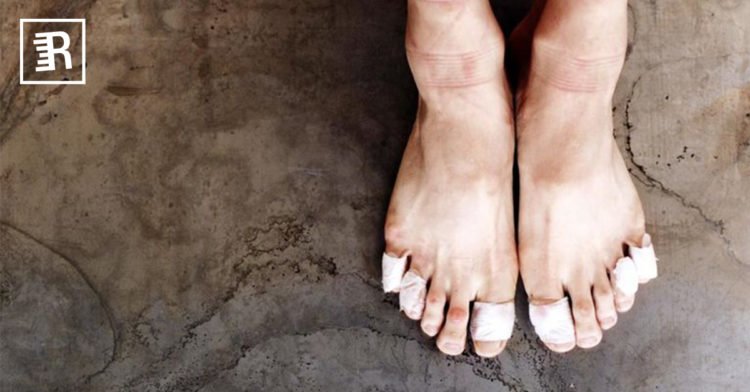Tired of blisters forming during your run?
Blisters are such a problem, that one specialist, Rebecca Rushton, created a whole blog on how to prevent and treat blisters of any kind.
Here are a few simple solutions to preventing blisters, so you can achieve your greatest mile yet.
1. Make Sure the Shoe Fits
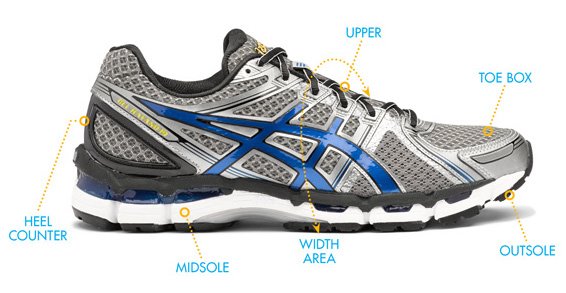
Just like Cinderella, the right shoe is important for your life. Too much pressure on your foot can cause blisters to form faster, while having a shoe too big can cause abrasions. Neither outcome is ideal, so be sure to check these steps to find the best fit for your foot.
Find the Length
The key is to have your longest toe be the width of your thumb nail away from the end of the toe box. Healthy Feet Store gives length for shoe conversations, but be sure to check the brand sizes when choosing a shoe.
Discover the Width
Too much space will cause instability, but having your foot bulge over the side of the shoe should not be happening either. Take a peruse through New Balance's shoe guide to figure out the needed width for your foot.
Adjust Accordingly
Find the perfect way to tie your shoes on right for maximum stability. Try the lace lock technique to help tie your shoes on right for preventing blisters.
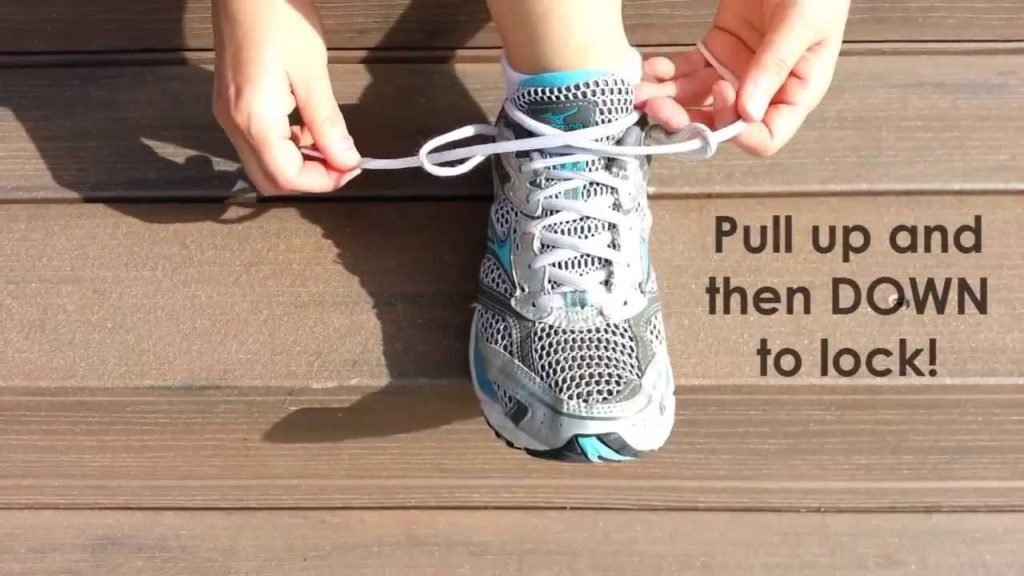
Here are some other lacing techniques that help.

Source: RunRepeat
2. Socks Are Your Best Friend
Not all socks are created equal. Podiatrist (foot doctor) and researcher Doug Richie explains the purpose of moisture wicking socks is to move the moisture to the front of the foot towards the breathable part of your shoe. That way you retain less sweat, and have less chance of a blister forming.
Toe socks are another option for socks that separate the moisture of your toes and provide breathability. Ideal for anyone who is prone to blistering.
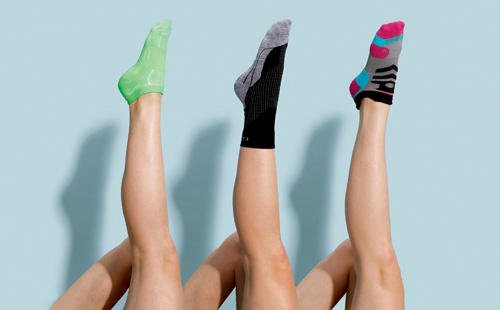
3. Prevent Friction
Friction blisters can be incredibly painful as it creates irritation underneath the skin. Prevent friction by avoiding cotton materials and keeping your skin moist for your foot movement to glide with the shoe. Keep hot spots at bay with the right shoes and material that keep your foot intact during your run.
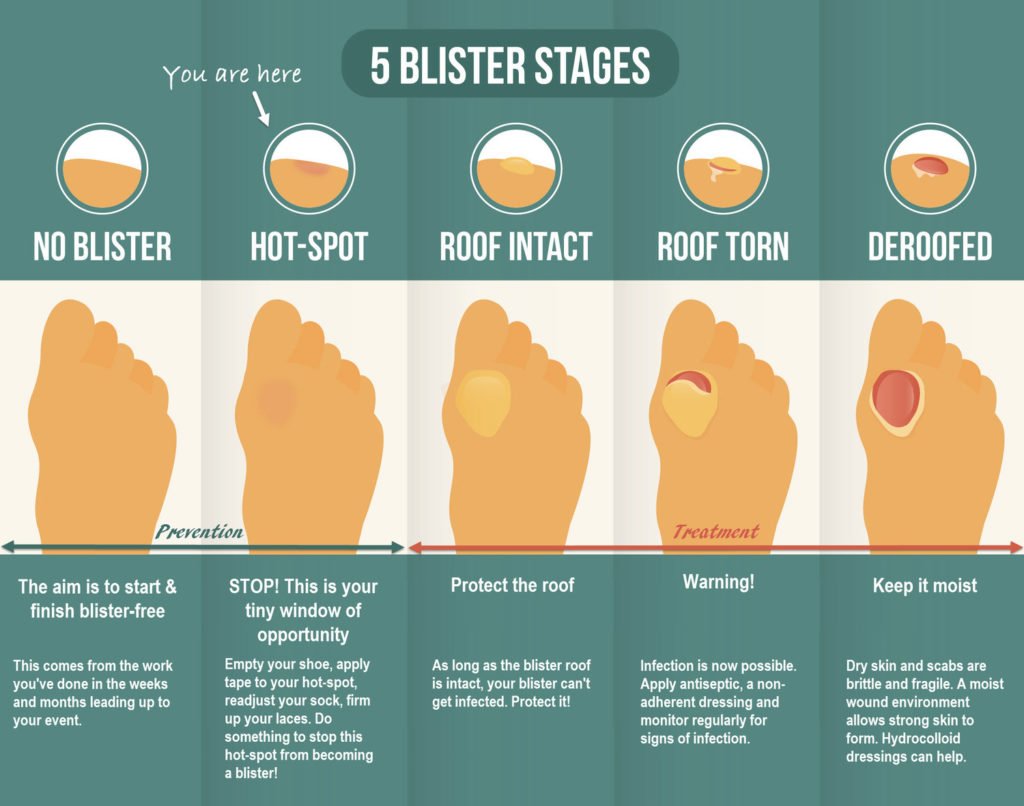
Keep an eye out for the beginning stages of a blister.
4. Moisten With Purpose
Adding Vaseline or Bodyglide is suggested when moisturizing your feet before a run. Try not to get carried away, otherwise you will have a slip and slide of a time.
Using moisture is not always a preventative method. Studies suggest that in some cases it can increase your chances of forming blisters and weakens your skin overtime. However, having moistened feet helps prevent dry skin from cracking, which can prevent skin irritation. Be aware of what works best for you to keep healthy feet.
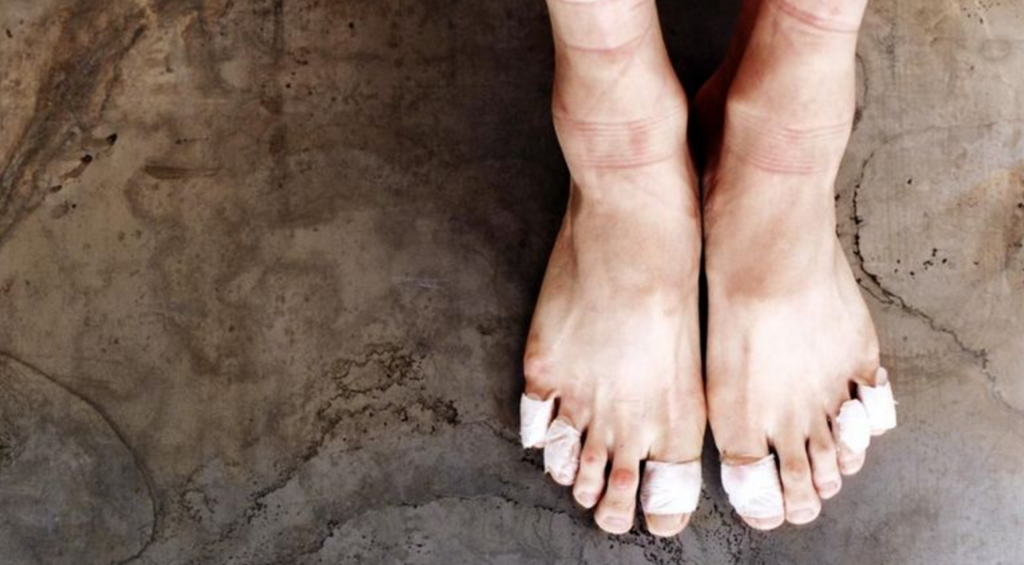
5. Shake on Some Powder
Especially during the peak hot seasons and the drenching weather of rain, it is important to keep your feet dry. Having your foot sliding around too much in your shoe can result in some serious blisters. Talcum powder is your best bet for dry feet and odor control during and after your runs.
Talcum powder also works great for those seeking to run without socks. As long as you are at ease about the lawsuit running around, you should be just fine using talcum powder to prevent blisters.
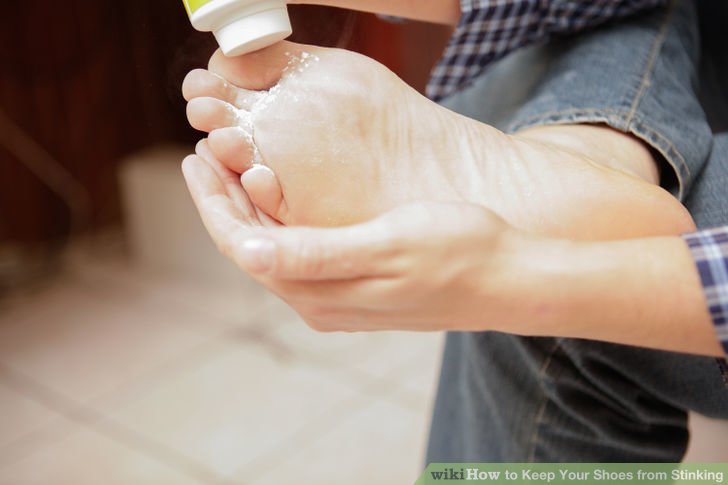
6. Double Up Those Socks
There are two forms of the double sock technique. One is wearing two pairs of socks, while the other is purchasing socks that have layers within the material. Either choice reduces your chance of getting blisters. Doubling up will not completely eliminate the possibility of a blister, so be mindful during your run and see if you need to implement multiple methods for blister prevention.
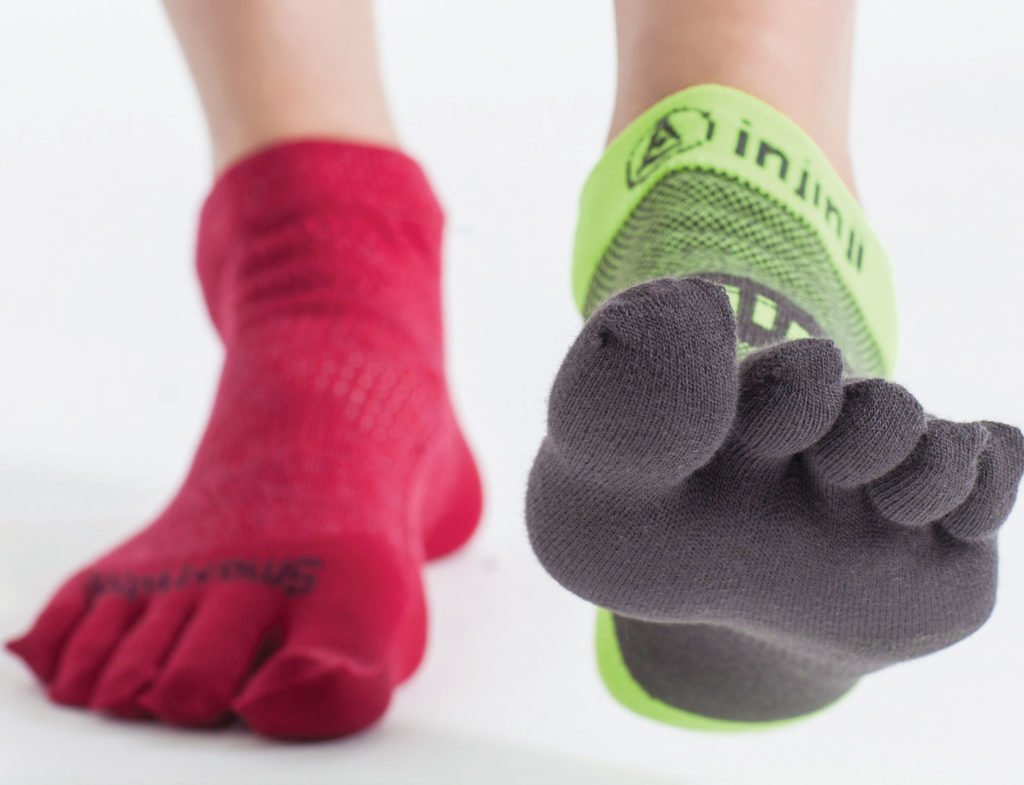
7. Tape Up
Taping is the most popular way to avoid blisters, and can certainly help protect your foot. By applying the tape correctly to cover hot spot areas, you can increase your mileage without the pain of blisters. There are several different kinds of sports and medical tape that you can try out. Experiment with different kinds during your run and discover what works best for you.
Taping right requires some skill, so be sure to consult a podiatrist, physician, coach, or even an instructional video on YouTube before taping your foot.
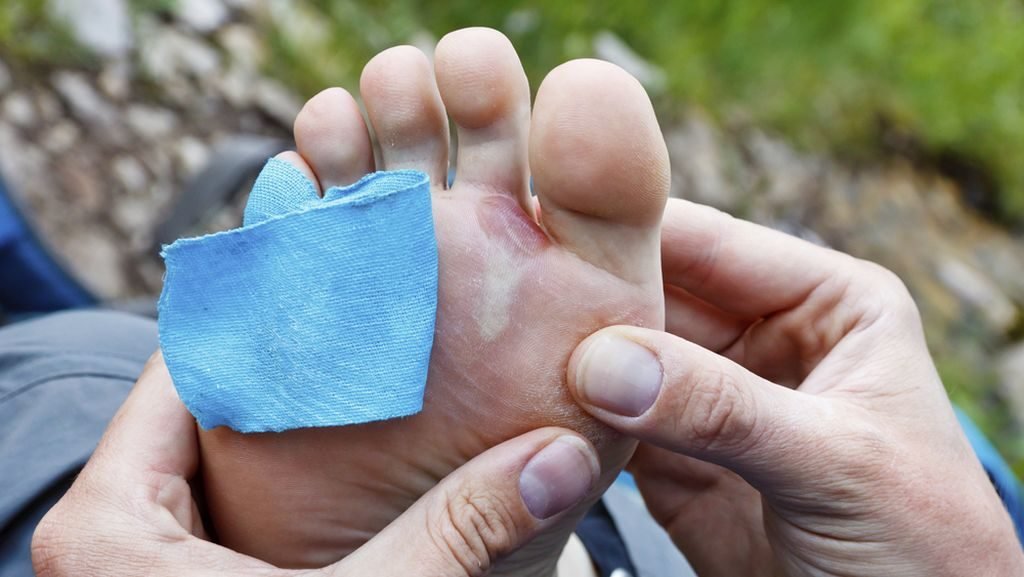
8. Consider Engo Patches
Engo patches last up to 500km and significantly reduce friction levels. With a sustainable design of being placed in your running shoe, Engo patches are ideal for runners who want to spend less time taping up their feet and more time running. It is a less bulky option than other patches, and keeps your feet protected from your running shoe rubbing too much.
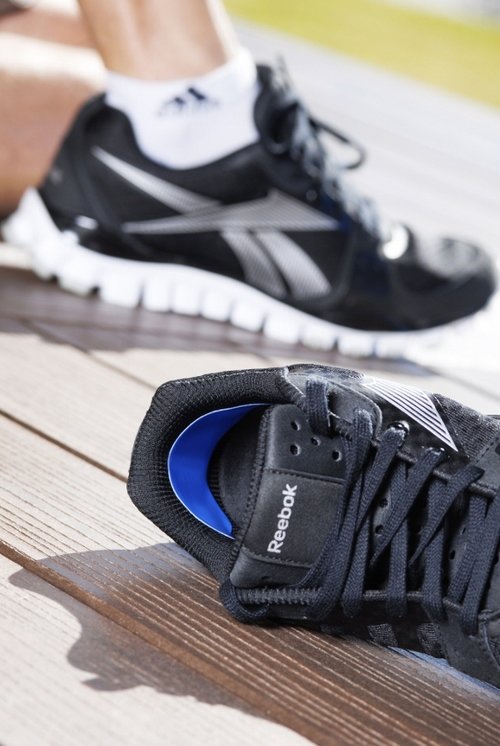
9. Moleskin Saves
Moleskin is a prevention and a cure for blisters. It comes in thick patches that can be cut into the exact size you need. The thick patch can protect against hot spots as well as keep blisters from getting worse. Apply multiple layers, or multiple places on your foot to stay at a steady stride during your run.
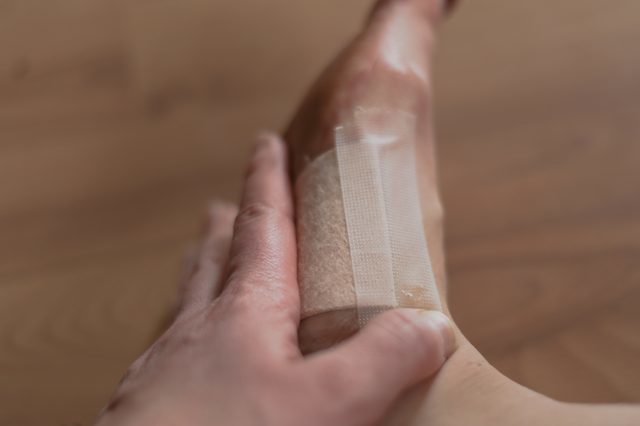
10. Give Extra Cushioning
Adding a cushioned insole can increase your efficiency as a runner and your effectiveness in preventing blisters. Your feet take on impact and weight while you are running, so why not give more ease by adding a little comfort with cushioned insoles.
Those who run with cushioned insoles only have a 5% chance of forming a blister as opposed to those running without. Insoles also can cause more friction, which means it may need to be paired with other blister prevention strategies.
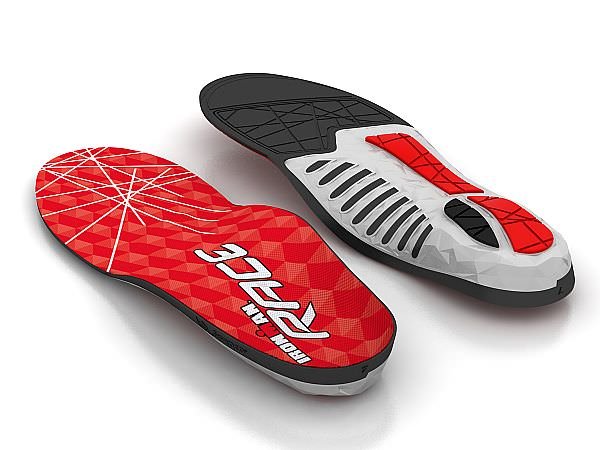
11. Adapt Before a Race
Be prepared and break in your socks and shoes. before attempting a big race. Your skin has to adapt just like your body when achieving more mileage. Be patient when adapting to a new running style, or breaking in those first pair of shoes for the season. Your feet will be thanking you later.
Try these proven adaptation techniques to prevent blisters during your run:
- Spend more time in your shoes
- Toughen up your skin by increasing mileage
- Build experience and integrity to your run
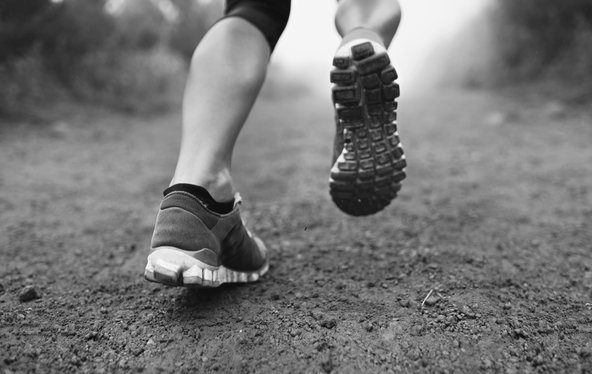
12. Try Technique
How you run can determine whether you are prone to blisters or not. The key is to pay acute attention to the movement that may be causing pain. The con to this method is the possibility of injury elsewhere when trying to change your running technique. Know what is best for your body and consult a physician or coach to ensure your stride is helping you, not hindering your performance.
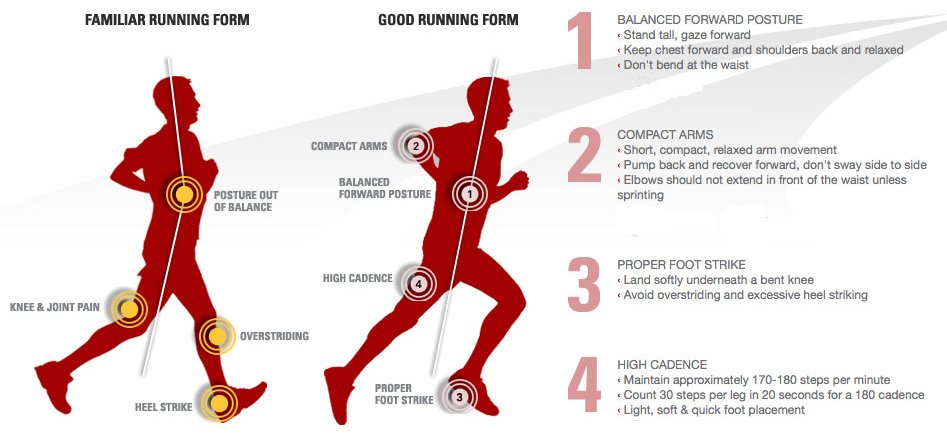
13. Antiperspirants
Studies show antiperspirants are not a long term solution to blister prevention, but it can temporarily help by reducing sweating during your run. Antiperspirants come in stick, spray on, or roll on methods. Be sure to cover your entire foot (including in between your toes), because even one missed spot can create a blister.
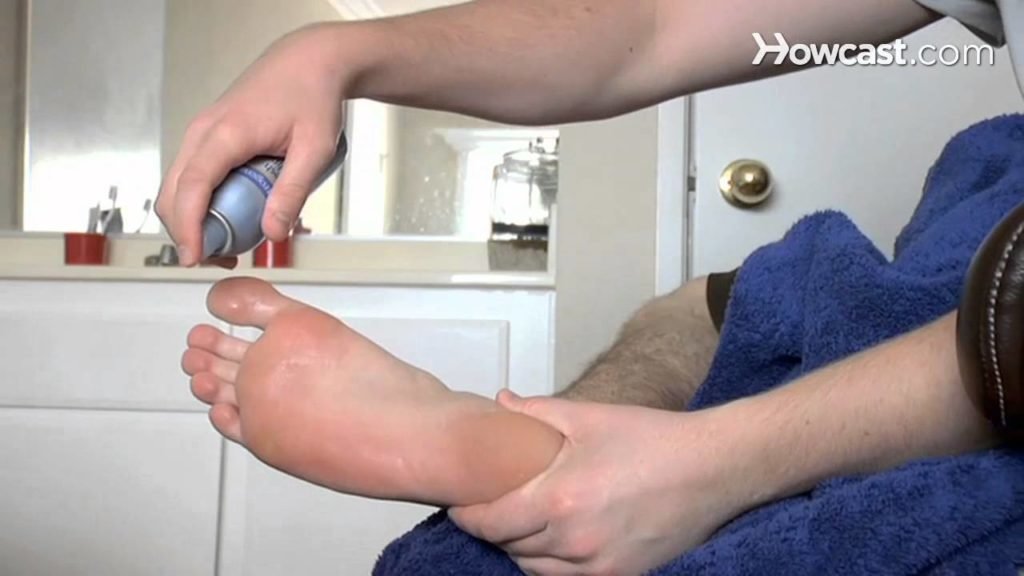
14. Astringents
Astringents are designed to contract body tissues to protect the skin from potential abrasions or blisters. There are natural forms of astringents that are recommended for skin care in general, but also can help tighten your skin to prevent blisters. If you have oily skin, astringents may be your ticket for dry feet during your daily workout.
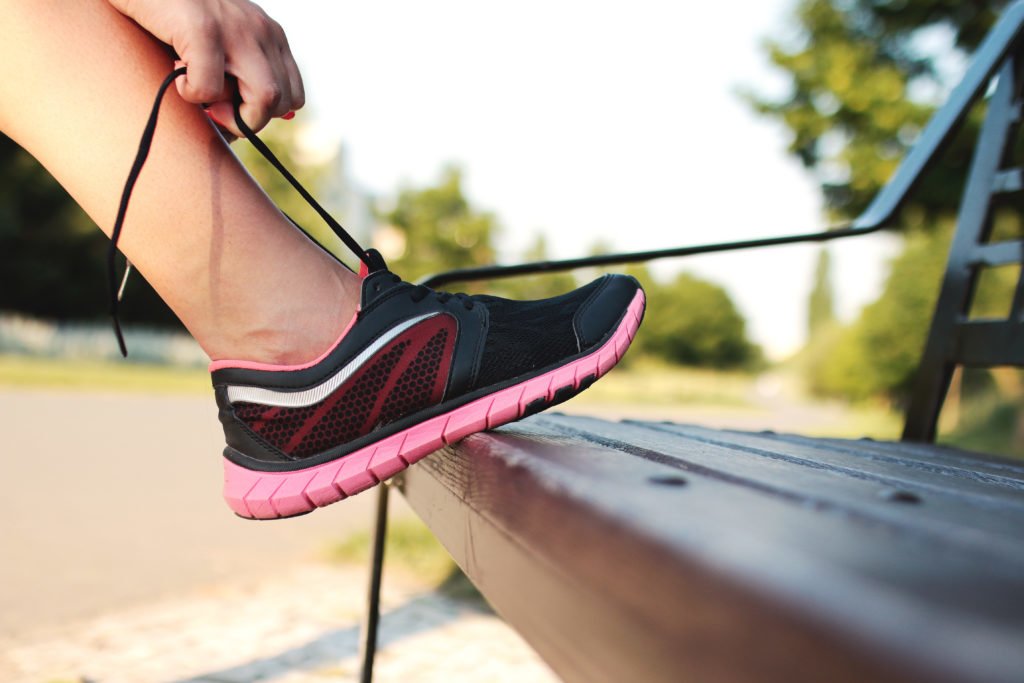
15. Orthotics
Orthotics are used to aid the foot to fit a shoe more properly. It can help prevent blisters by shifting your running style to have less impact during your run. Podiatrists take into account foot pressure, posture, and balance when creating orthotics that fit in the way you need. Not only can it help with blisters, it also can help with pain throughout as it stabilizes your body to align.
If you are already prone to blisters, orthotics potentially can create more hot spots. Be mindful and break in your orthotics before taking them out to the big races to avoid those major blisters.

Feel free to download and share the infographic below on how to prevent blisters!


